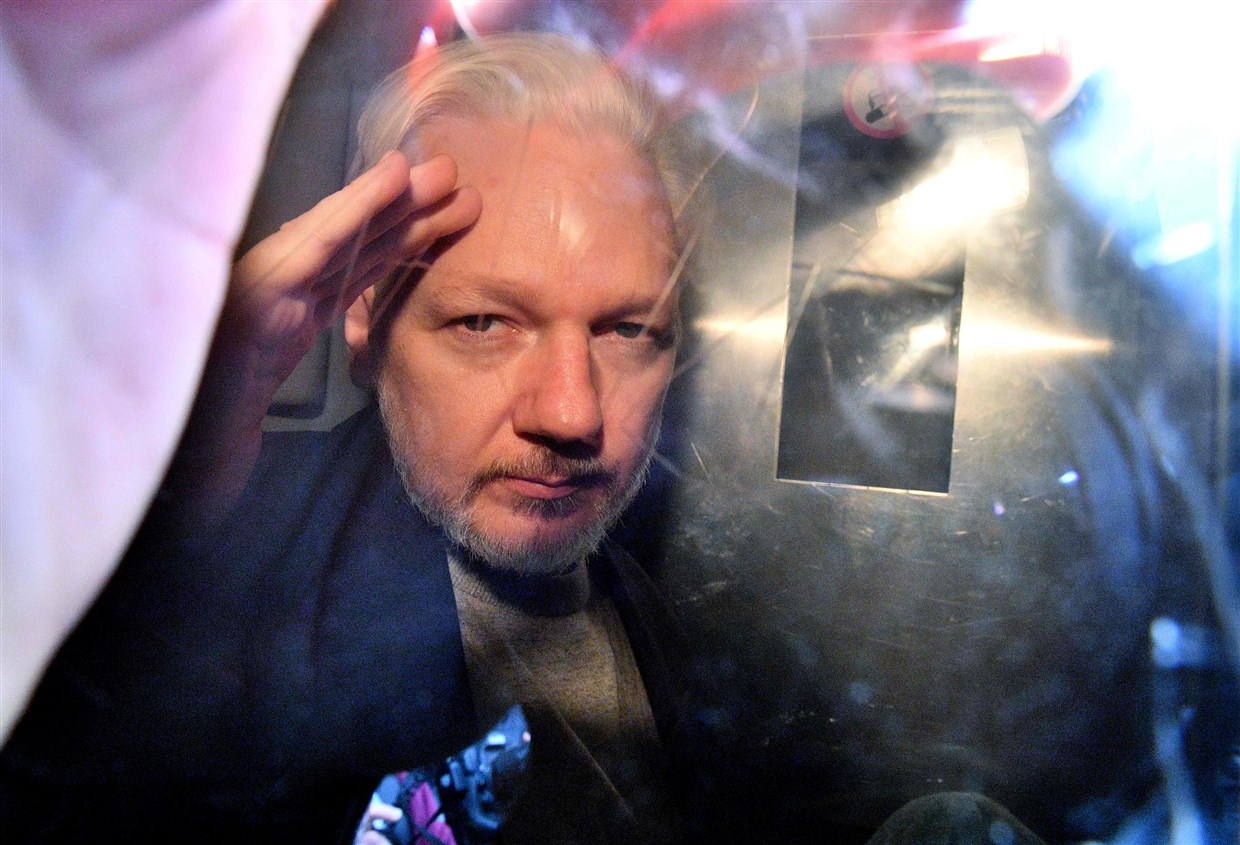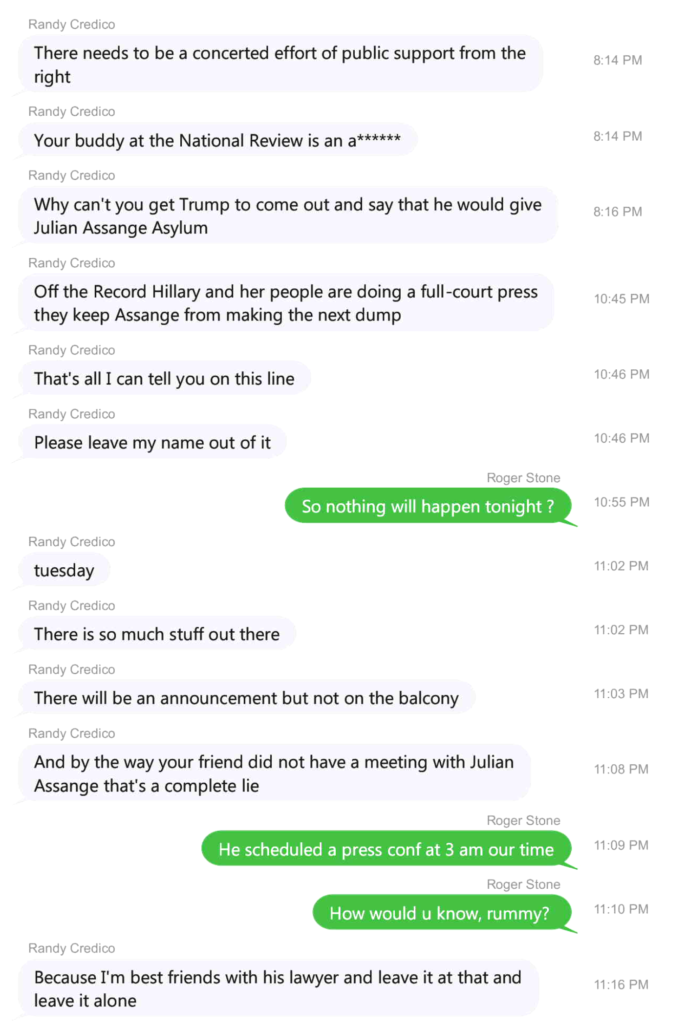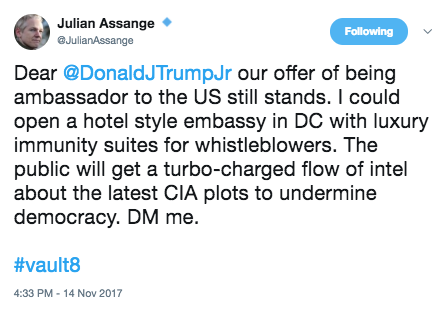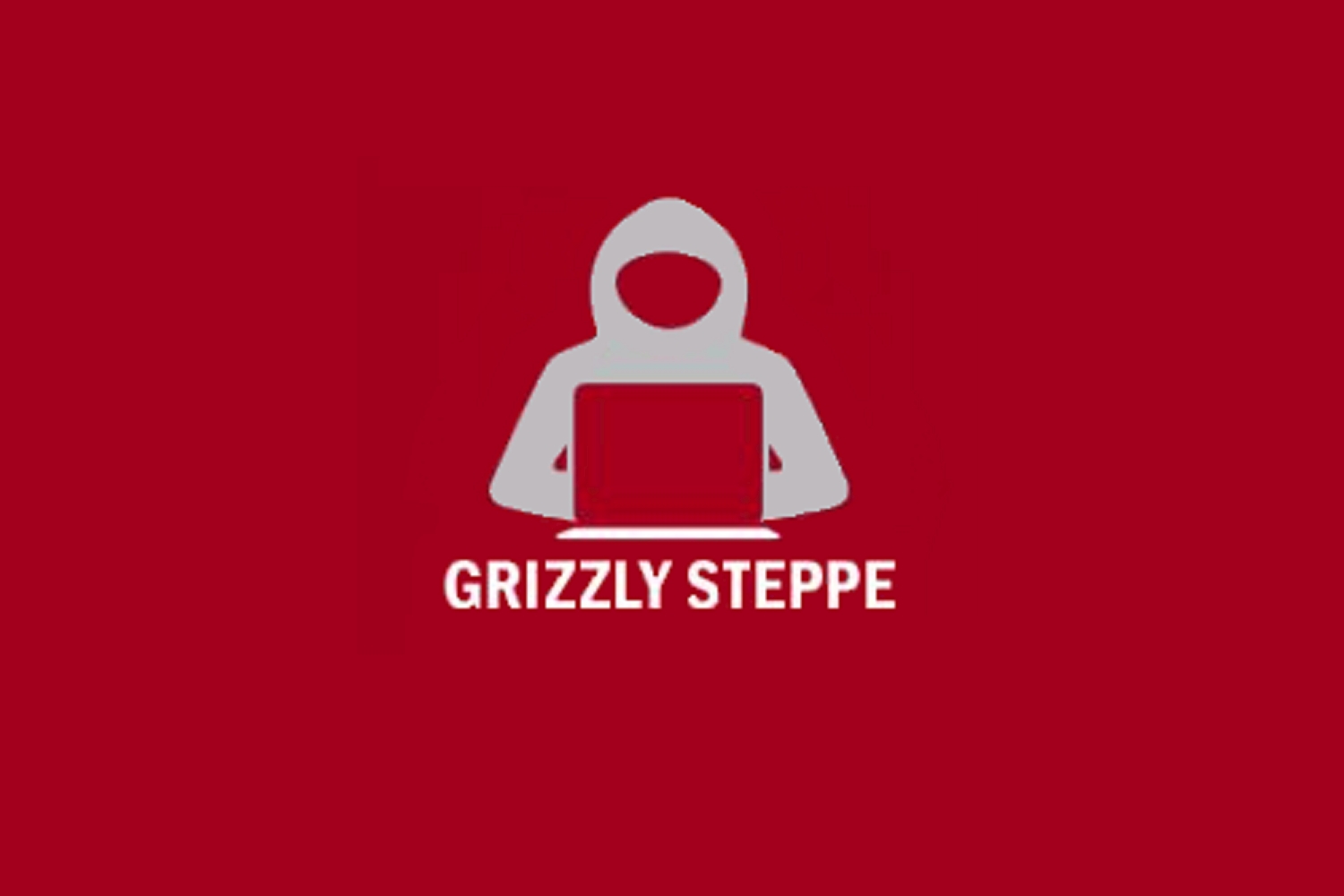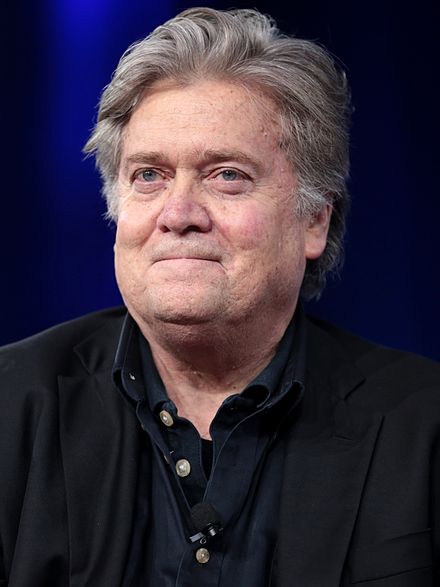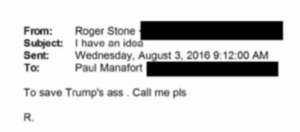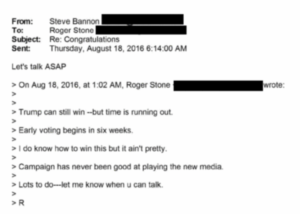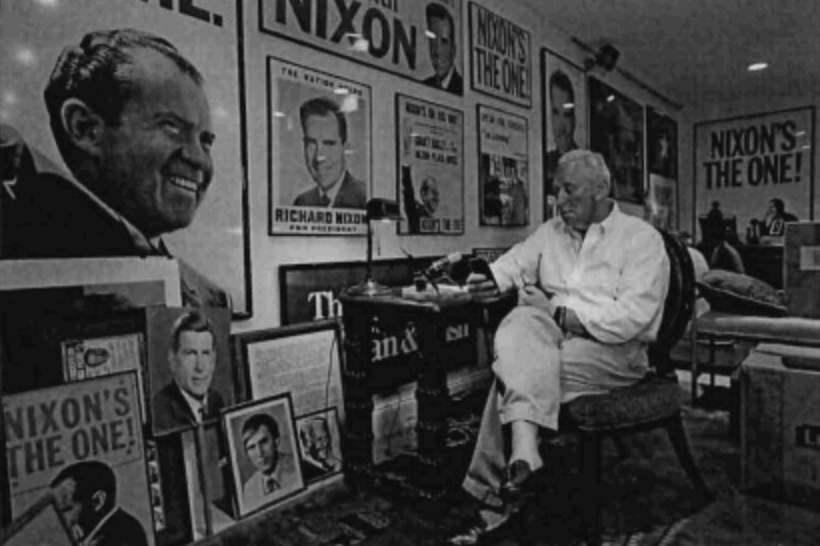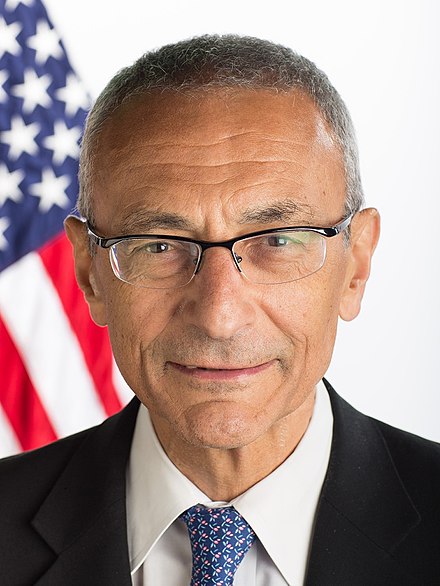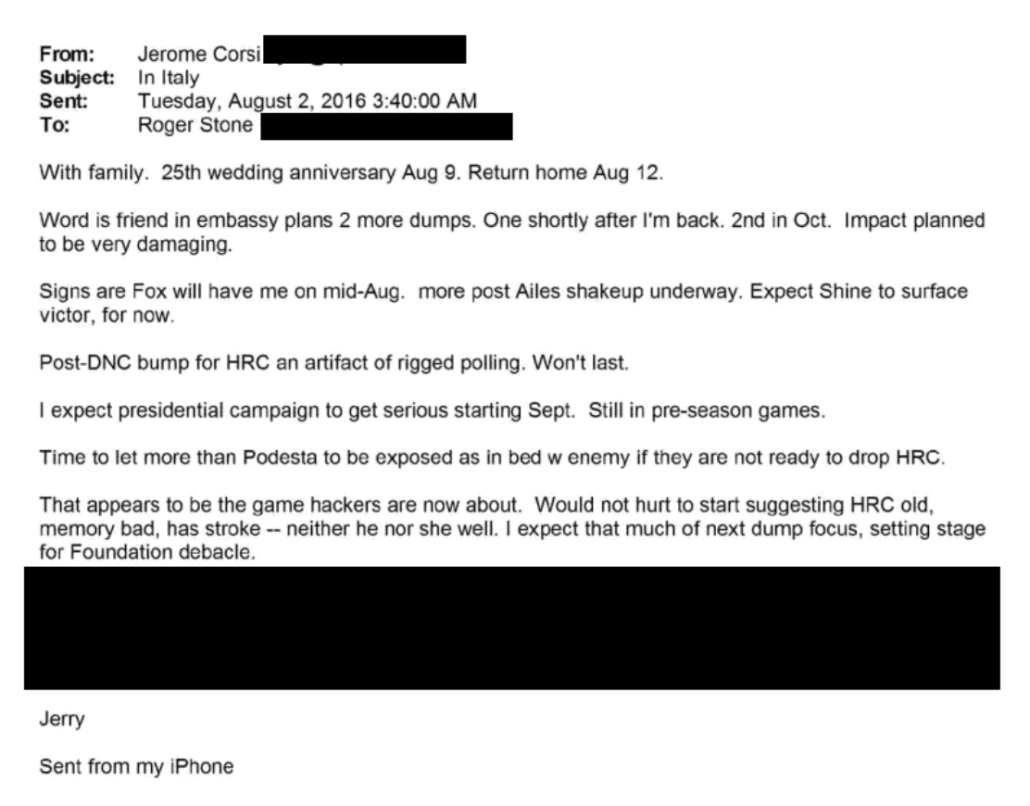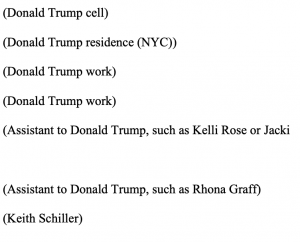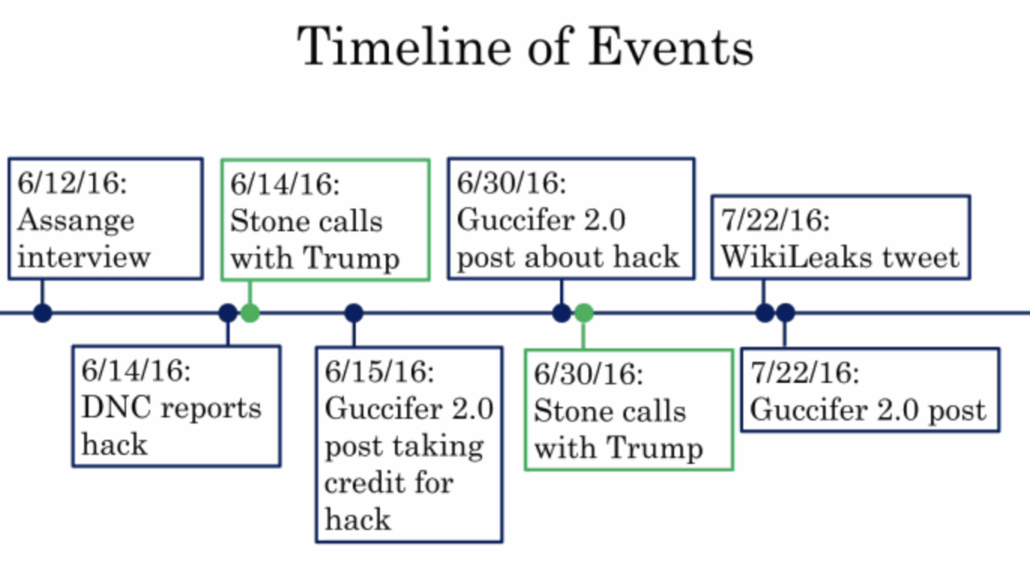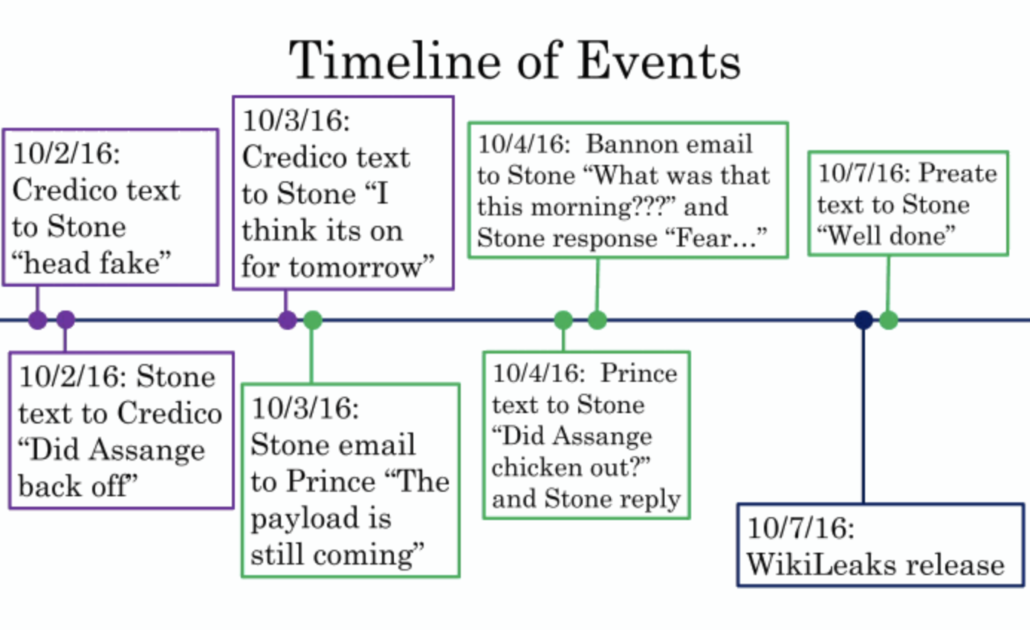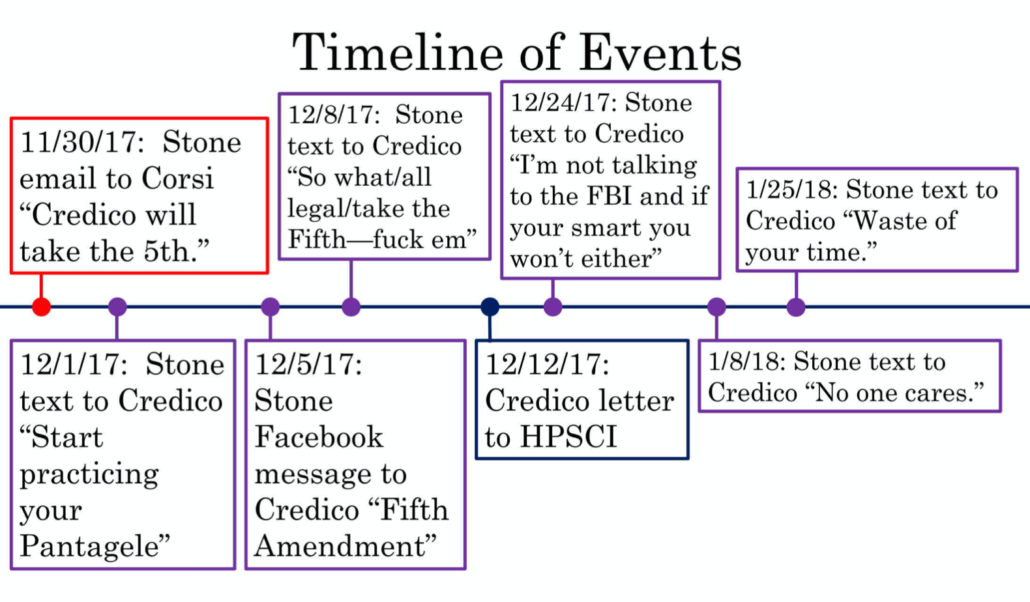The Mueller Charging Decisions Through Ratfucker Rashomon’s Eyes
As noted, late Monday night, DOJ released a newly unredacted version of the Mueller Report that disclosed that, when Mueller shut down in March 2019, there were ongoing investigations, plural, into Stone’s role in the hack-and-leak. This all accords with what I laid out in my Ratfucker Rashomon series, which read the four different stories of the Stone investigation so as to explain that the Stone prosecution was partly an effort to collect further information in the investigation.
I’d like to look at the newly unsealed charging language through the lens of that series. The introduction to the discussion of the hack-and-leak notes (unlike the IRA indictment) that in addition to those charged in the conspiracy, there were other co-conspirators, defining the conspiracy to include the staged releases of the documents.
On July 13, 2018, a federal grand jury in the District of Columbia returned an indictment charging Russian military intelligence officers from the GRU with conspiring to hack into various U.S. computers used by the Clinton Campaign, DNC, DCCC, and other U.S. persons, in violation of 18 U.S.C. §§ 1030 and 371 (Count One); committing identity theft and conspiring to commit money laundering in furtherance of that hacking conspiracy, in violation of 18 U.S.C. §§ 1028A and 1956(h) (Counts Two through Ten); and a separate conspiracy to hack into the computers of U.S. persons and entities responsible for the administration of the 2016 U.S. election, in violation of 18 U.S.C. §§ 1030 and 371 (Count Eleven). Netyksho Indictment.1277 As of this writing, all 12 defendants remain at large.
The Netyksho indictment alleges that the defendants conspired with one another and with others to hack into the computers of U.S. persons and entities involved in the 2016 U.S. presidential election, steal documents from those computers, and stage releases of the stolen documents to interfere in the election. [my emphasis]
In a curious phrase, the introduction describes the co-conspirators using Guccifer 2.0 to stage releases through WikiLeaks, thereby emphasizing the role of Guccifer 2.0 as middle-man.
The indictment also describes how, in staging the releases, the defendants used the Guccifer 2.0 persona to disseminate documents through WikiLeaks.
As I’ve noted, there’s good reason to suspect that Stone’s tie to WikiLeaks was via Guccifer 2.0.
In a previously unredacted passage, it then describes Jerome Corsi’s claims that Stone had optimized the WikiLeaks release on October 7, 2016.
One witness told the Office at one point that the initial release of Podesta emails on October 7 may have come at the behest of, or in coordination with, Roger Stone, an associate of candidate Trump. As explained in Volume I, Section III.D.1.d, supra, phone records show that Stone called Jerome Corsi on October 7, after Stone received a call from the Washington Post. The Washington Post broke a story later that day about a video recording of Trump speaking about women in graphic terms. According to some of Corsi’s statements to the Office [grand jury redaction] Stone said that he had learned about the imminent release of that tape recording, and it was expected to generate significant negative media attention for the Campaign. Corsi told investigators that Stone may have believed from their prior dealings that Corsi had connections to Julian Assange, WikiLeaks’s founder, and that Stone therefore asked Corsi to tell Assange to start releasing the Podesta emails immediately to shift the news cycle away from the damaging Trump recording. Although Corsi denies that he actually had access to Assange, he told the Office at one point that he tried to bring the request to Assange’s attention via public Twitter posts and by asking other contacts to get in touch with Assange. The investigation did not establish that Corsi actually took those steps, but WikiLeaks did release the first batch of Podesta emails later on the afternoon of October 7, within an hour of the publication of the Washington Post’s story on the Trump tape.
As I laid out in this post from the Rashomon series, the focus on Corsi later in this section — while not inappropriate from the viewpoint of the prosecutorial memo that the Mueller Report served as — appears to have been a head fake, a way to explain why the Report addressed the Podesta emails without ever addressing the substantive evidence that showed Stone did optimize the Podesta release. This passage is the same: a way to explain the focus on the Podesta emails without revealing what prosecutors actually knew, including (as laid out in this post), pretty compelling evidence that Stone and Corsi had the content of some of the Podesta emails by August 15, 2016, ones related to an attack on Podesta that right wingers were pushing even as Stone was working to optimize the release.
Having used the Corsi head fake to introduce the topic, then, the discussion of the charging decision starts by generally nodding to “some evidence that Stone played a role in coordinating the October 7 release of the Podesta materials” and — through that — focusing on WikiLeaks.
Given WikiLeaks’s role in disseminating the hacked materials, and the existence of some evidence that Stone played a role in coordinating the October 7 release of the Podesta materials, this Office considered whether to charge WikiLeaks, Assange, or Stone as conspirators in the computer-intrusion conspiracy under Sections 1030 and 371.1278 The theory of prosecution would be that these actors were liable as late joiners in an already existing conspiracy.
It lays out that two things would be necessary to charge either WikiLeaks or Stone under this theory: proof they agreed to enter into the conspiracy and that they knew about ongoing hacking. It envisions WikiLeaks might have served as a “fence,” marketing goods it knew to be stolen.
In particular, although it did not participate in the hacking itself, WikiLeaks would be liable for ensuring a market for and maximizing the value of the stolen materials—much as someone who holds himself out as a “fence” may be found to have joined a conspiracy to traffic in stolen goods, see United States v. Hess, 691 F.2d 984, 988 (11th Cir. 1982), and an individual who launders drug money can be a member of a drug-trafficking conspiracy when such laundering activities are “integral to the success” of the overall trafficking venture,
This language is interesting not just in this context. The expanded CFAA charge in the second superseding Assange indictment describes how Assange had Siggi reach out to Gnosis and LulzSec and then later, some of those same people were involved in hacking Stratfor. While they were doing so, Assange helped them sort through the stolen emails, and — ultimately — WikiLeaks published them. In that case, then, the government is effectively claiming that Assange did agree to the hack before it happened, and then guaranteed the access to the files once they were hacked. Here, though, the Mueller Report concluded it didn’t have admissible evidence to charge WikiLeaks, in part because the key communications were encrypted.
The Office determined, however, that it did not have admissible evidence that was probably sufficient to obtain and sustain a Section 1030 conspiracy conviction of WikiLeaks, Assange, or Stone.
[snip]
With respect to WikiLeaks and Assange, this Office determined the admissible evidence to be insufficient on both the agreement and knowledge prongs. As to agreement, many of the communications between the GRU officers and WikiLeaks-affiliated actors occurred via encrypted chats. Although a conspiracy is often inferred from the circumstances, see Iannelli, 420 U.S. at 777 n.10, the lack of visibility into the contents of these communications would hinder the Office’s ability to prove that WikiLeaks was aware of and intended to join the criminal venture comprised of the GRU hackers.
I get the feeling the US government has evidence — just not evidence they would want to submit at trial, something from a foreign partner or collection targeted on Russians (temporally, this would not be anything collected via UC Global, which is one of the reasons why the UC Global surveillance is probably not what WikiLeaks supporters claim it is).
The Report also explains that it did not have evidence that Assange knew of the ongoing hacks.
Here, a late-joiner theory would require that the conspirator knew that the computer intrusions that comprise the Section 1030 violation were ongoing, or expected to continue, at the time that he or she joined the conspiracy.
[snip]
Similar problems of proof existed as to knowledge. While the investigation developed evidence that the GRU’s hacking efforts in fact were continuing at least at the time of the July 2016 WikiLeaks dissemination, see Netyksho Indictment ¶¶ 32, 34, the Office did not develop sufficient admissible evidence that WikiLeaks knew of—or even was willfully blind to—that fact. Cf. Global-Tech Appliances, Inc. v. SEB S.A., 563 U.S. 754, 769-70 (2011) (recognizing that willful blindness can be used to prove the knowledge element of an offense). And absent sufficient evidence of such knowledge, the government could not prove that WikiLeaks (or Assange) joined an ongoing hacking conspiracy intending to further or facilitate additional computer intrusions.
Note the timing: the Report is saying that WikiLeaks would have had to know that GRU was still hacking Democratic targets when it released the first dump in July 2016. It is silent about ongoing after that, even though the hacking did continue through the election.
It then says the legal analysis is similar for Stone. But it doesn’t conduct that analysis in the way it does for WikiLeaks. Instead, it says it still has factual questions about Stone’s knowledge of ongoing hacks, returning to that Jerome Corsi head fake, rather than discussing the actual evidence prosecutors did have.
The Office determined that it could not pursue a Section 1030 conspiracy charge against Stone for some of the same legal reasons. The most fundamental hurdles, though, are factual ones.1279 As explained in Volume I, Section III.D.1, supra, Corsi’s accounts of his interactions with Stone on October 7, 2016 are not fully consistent or corroborated. Even if they were, neither Corsi’s testimony nor other evidence currently available to the Office is sufficient to prove beyond a reasonable doubt that Stone knew or believed that the computer intrusions were ongoing at the time he ostensibly encouraged or coordinated the publication of the Podesta emails. Stone’s actions would thus be consistent with (among other things) a belief that he was aiding in the dissemination of the fruits of an already completed hacking operation perpetrated by a third party, which would be a level of knowledge insufficient to establish conspiracy liability. See State v. Phillips, 82 S.E.2d 762, 766 (N.C. 1954) (“In the very nature of things, persons cannot retroactively conspire to commit a previously consummated crime.”) (quoted in Model Penal Code and Commentaries § 5.03, at 442 (1985)).
1279 Some of the factual uncertainties are the subject of ongoing investigations that have been referred by this Office to the D.C. U.S. Attorney’s Office.
The question of Stone’s foreknowledge is actually quite different than Assange’s. That’s because (as the Mueller Report barely mentions but affidavits lay out in detail), he seems to have had knowledge from Guccifer 2.0, possibly as early as April and reportedly as early as May, when hackers were still in the DNC servers. The SSCI Report lays out (but the Mueller Report did not) that Stone was scripting pro-Russian Tweets for Trump in the days after he made his “Russia are you listening” comment. If prosecutors found proof that Stone scripted the “Are you listening” quote, then he could be directly tied to the attempted hacking of Hillary that immediately followed. And Manafort, at least, was asked whether he knew that Russian hackers were probing state election infrastructure in the days before the election, so prosecutors may have reason to believe Stone knew of that (certainly, his voter suppression efforts paralleled Russia’s). This is one reason why it was so curious that prosecutors laid out how Stone pitched both Manafort and Steve Bannon on a way to win ugly during the same period he was optimizing the Podesta emails; it’s possible he pitched them on the later Russian voter suppression and. not just the Podesta emails.
Still, aside from the question to Manafort (which he denied) and some suggestions from his contemporaneous writings, there’s no public evidence of that.
Nevertheless and perhaps counterintuitively, there’s more evidence that Stone knew of ongoing hacking than that Assange did (and when Stone has denied such knowledge in the past, the timeline he uses is always bolloxed all to hell, ignoring key parts of the hacking).
That’s most (not not all) of the CFAA decision. But there’s a second passage, one focused on whether WikiLeaks provided an illegal campaign donation to Trump (one that parallels the similar discussion of whether the June 9 meeting amounted to an illegal offer and solicitation of foreign assistance).
Much of this discussion focuses on campaign finance law — whether the stolen emails represented something of value and how foreigners are covered by campaign finance law. I may return to it. The analysis in this section, plus an earlier one of the Bartnicki precedent that says it’s usually not criminal to publish illegally obtained information, could now have dramatically changed given a SCOTUS decision eliminating any claim for foreigners like Julian Assange to rely on a First Amendment defense. Given the other First Amendment issues, I doubt prosecutors would ever revisit this decision, but prosecutors in Assange’s existing indictment may already be planning to rely on that precedent. (I hope to return to the irony that a Trump judge may fuck up Assange’s defense after Assange helped Trump get elected.)
But not all of it.
There’s also a discussion about whether Stone would have criminal liability. It’s particularly interesting not least because it invokes others on the campaign too (in a prosecutorial memo that considers whether Don Jr committed a CFAA crime by using a password he got from WikiLeaks to access a non-public website).
There is also insufficient evidence at the present time to establish beyond a reasonable doubt that Roger Stone or any other persons associated with the Campaign coordinated with WikiLeaks on the release of the emails, which alone would preclude prosecution of them for the WikiLeaks-related conduct even if WikiLeaks had violated campaign-finance law.
[snip]
The Office also considered whether Roger Stone could be prosecuted for any direct or indirect contacts with WikiLeaks about its release of hacked emails for the purpose of influencing the presidential election, and whether any coordination between Stone and WikiLeaks would affect WikiLeaks’s criminal exposure. If WikiLeaks’s release of documents were conducted in coordination with Stone (or others associated with the Trump Campaign), the activity would arguably constitute a “contribution,” rather than an “expenditure.” [my emphasis]
I’ll just leave that repeated invocation of others associated with the Trump campaign for now.
Importantly, though, this section comes as close as any other passage in the Mueller Report does — far closer than the Jerome Corsi head fake sections do — to saying Stone didn’t coordinate with WikiLeaks.
The Office did not pursue that theory [that Stone might be liable], however, because the investigation did not identify sufficient credible evidence that would establish that Stone coordinated with WikiLeaks or that any contacts with WikiLeaks were attributable to the Campaign. See Volume I, Section III.D.1, supra. While the Office cannot exclude the possibility of coordination between Stone and WikiLeaks or that additional evidence could come to light on that issue, the investigation did not obtain admissible evidence likely to meet the government’s burden to prove facts establishing such coordination beyond a reasonable doubt.
Note the reference to “credible evidence,” which I take to be a reference to Corsi.
Two key things about this though: This is all about WikiLeaks. There’s not a word about criminal liability if Stone can be shown to have coordinated with Guccifer 2.0 (Stone, of course, would say he believed Guccifer 2.0 was not Russian, even though prior to August 5, he had said he did believe the persona was Russian). I laid out evidence that that seems to have been the case — that Stone’s go-between was actually Guccifer 2.0, not Corsi or Credico or anyone else. And there’s good reason to believe Mueller expected to find that at the time (which I’ll return to).
The other thing is this WikiLeaks related analysis is all campaign finance related. It doesn’t consider a pardon, about which there was communication between Stone and WikiLeaks, possibly even Don Jr or Paul Manafort and WikiLeaks. There, the question has to do with the terms, whether prosecutors have proof it was part of a quid pro quo. And, as I said before, at least as of early October, that investigation remained open.
As I laid out in my Ratfucker Rashomon series, the Mueller Report has always been misread as a summary of all the things Mueller found. It’s not. It’s the explanation of charging decisions. But the footnote unsealed on Monday confirms that there were multiple charging decisions that Mueller did not make with respect to Stone — he sent those ongoing investigations to DC. And so the story told here, with significant gaps about Guccifer 2.0 and post-election, doesn’t tell the most interesting part of the story.




